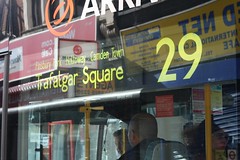 At dConstruct in Brighton last month Steven Johnson talked at length about his startup, outside.in, that collects together place-blogs to display aggregates commentary and information on a block, neighbourhood and city level. The site is US-only at the moment, which made it a curious presentation for a largely non-US audience. Their toolset for extracting geographical information from blog entries is impressive, but a number of us were talking afterwards about what the real value of such aggregation is for those who might already live in an information-rich or tightly knit neighbourhood.
At dConstruct in Brighton last month Steven Johnson talked at length about his startup, outside.in, that collects together place-blogs to display aggregates commentary and information on a block, neighbourhood and city level. The site is US-only at the moment, which made it a curious presentation for a largely non-US audience. Their toolset for extracting geographical information from blog entries is impressive, but a number of us were talking afterwards about what the real value of such aggregation is for those who might already live in an information-rich or tightly knit neighbourhood.
I find outside.in handy for keeping up with news from Grand Rapids now that I no longer live there, but even if it were available in the UK I suspect its main use would be for identifying other local people rather than learning what’s going on. And even then, there are existing community discussion groups and other fora that work well.
What would seem really compelling is a way to connect with the places that only get our partial attention. A couple of times a week I take a bus past a local leisure centre. It’s not somewhere that I’m likely to use at the moment, but with big life changes coming up it may be somewhere I’m more interested in before long. It wasn’t until after the fact that I saw that it was the centre of some controversial planning decisions, far too late to engage in the debate.
We all travel along a variety of paths all the time. Often only a few of the places on our routes get much of our attention, but most of them are of some importance to us. I’d really like to have a site that was aware of my most common (or preferred) routes and helped me engage with them more deeply. Presumably it wouldn’t be much more work than that outside.in does to assemble place-blogs. That geo-data just needs to be mapped to a trajectory rather than a simple locale.